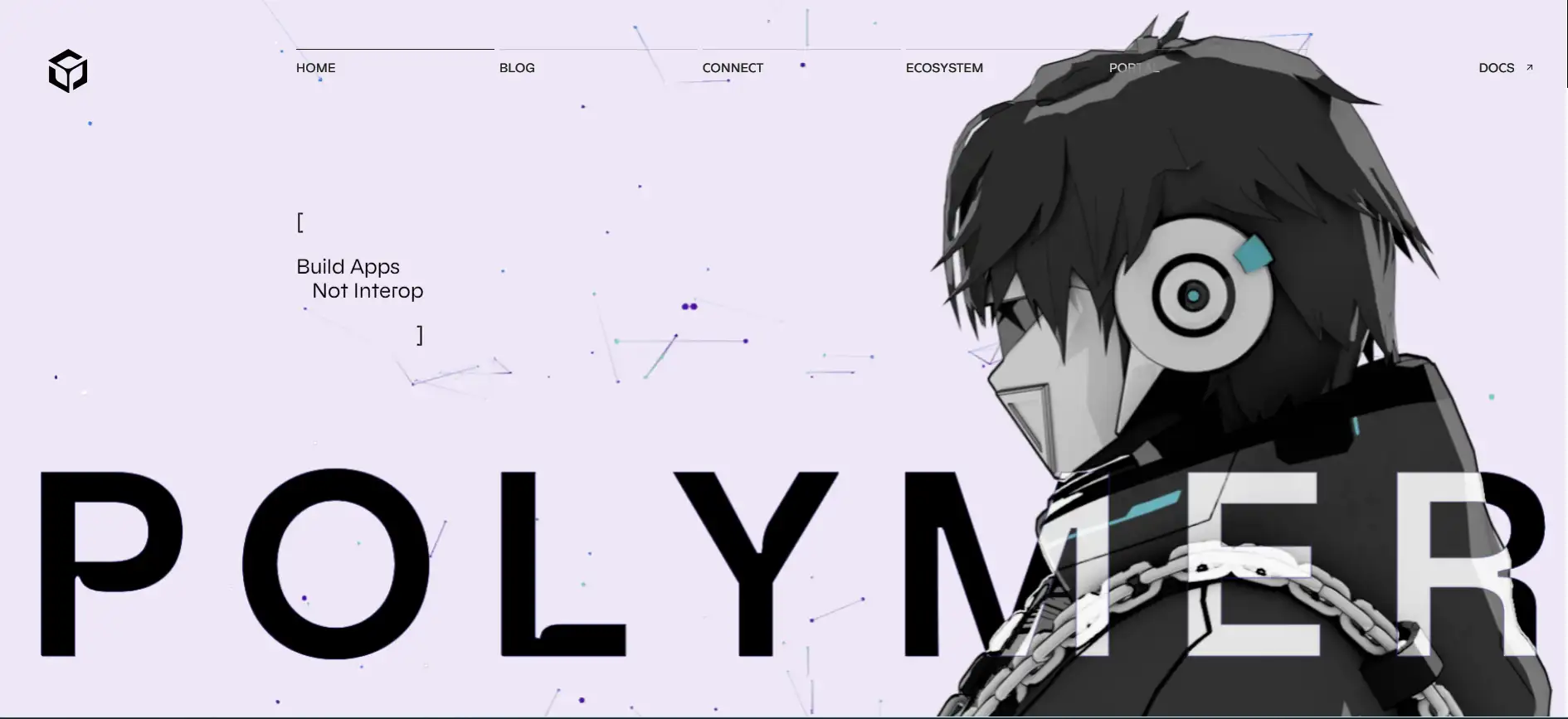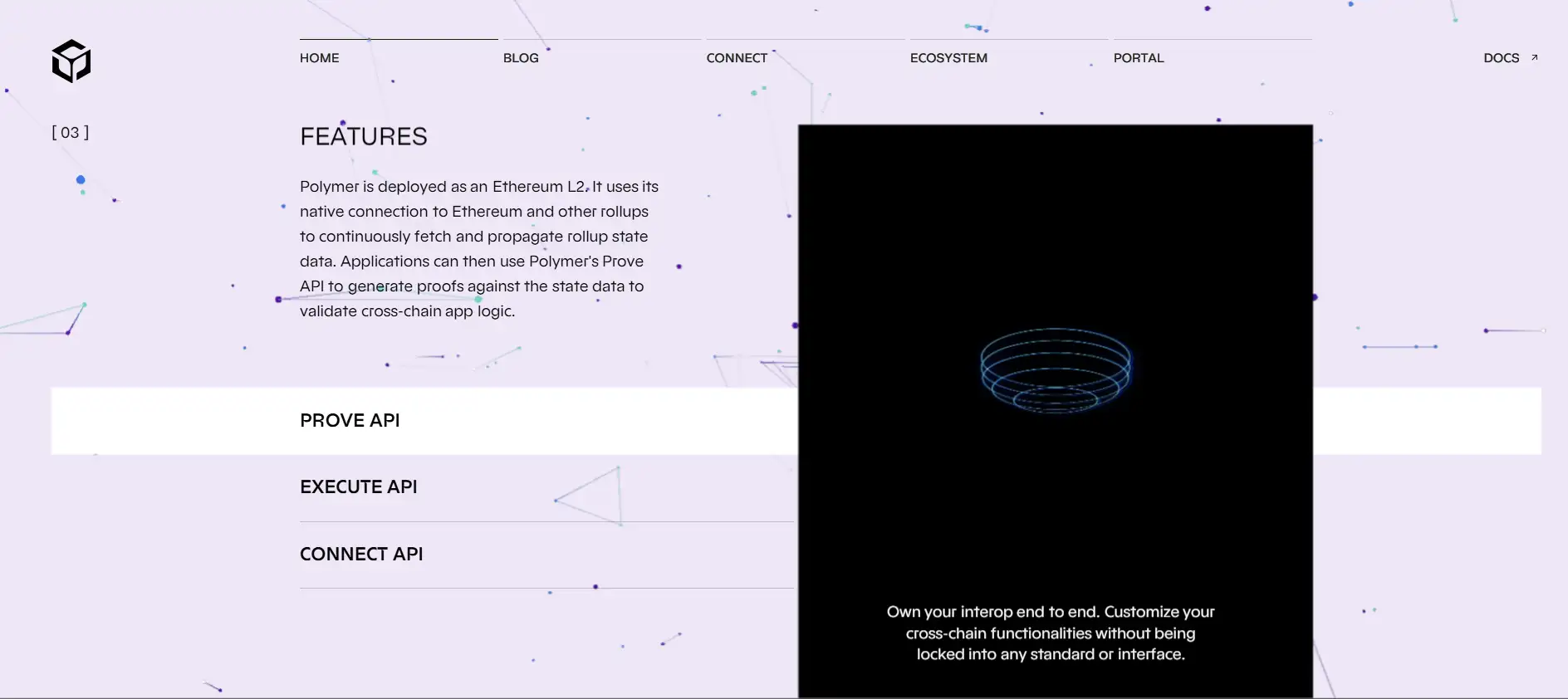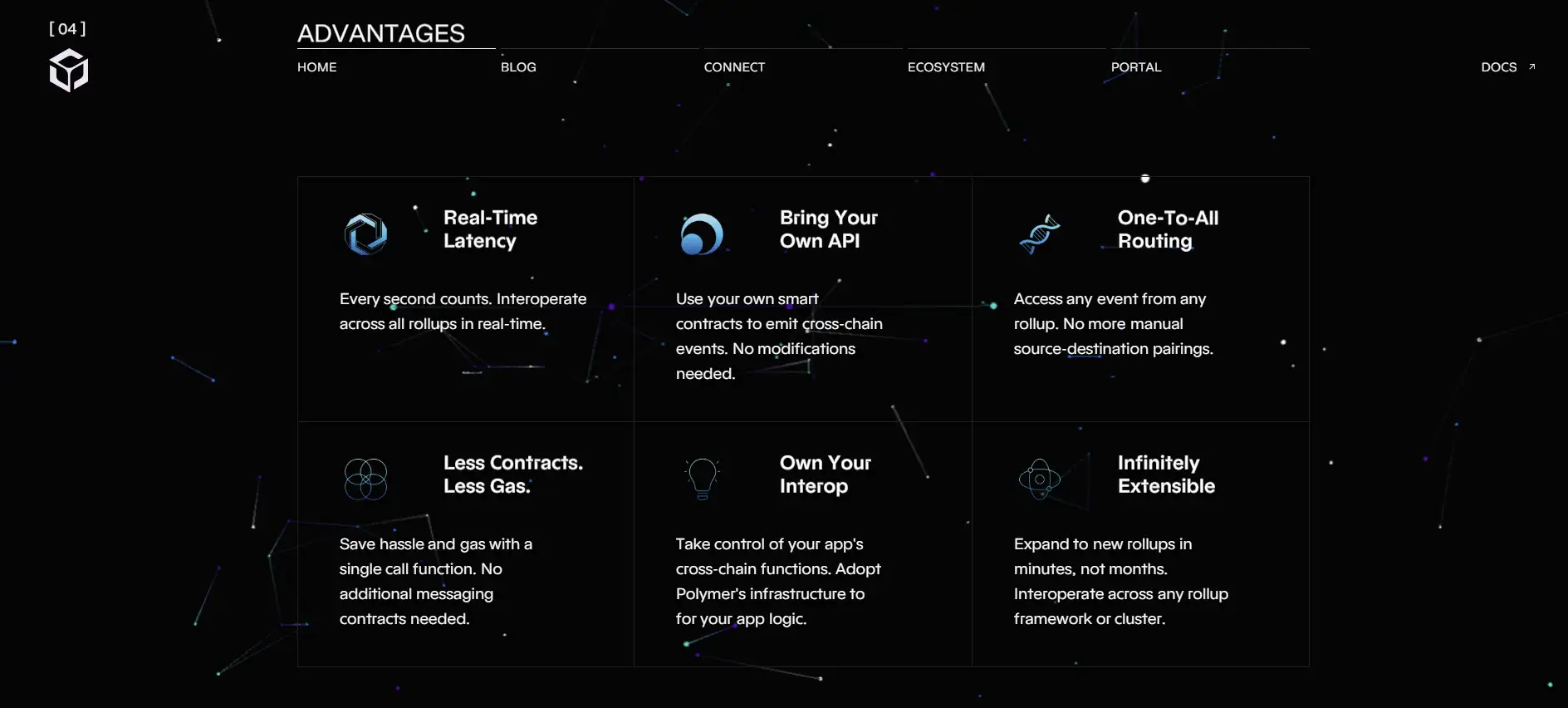About Polymer
Polymer is a next-generation interoperability protocol that enables developers to build scalable cross-chain applications without relying on traditional messaging standards. Instead of forcing apps to adapt to rigid interop layers, Polymer allows developers to build freely using their existing APIs, while supporting fast, secure, and composable execution across rollups.
Deployed as an Ethereum Layer 2, Polymer serves as a high-speed data and execution layer between rollups. It uses sequencer-sourced block headers and pre-confirmations to validate cross-chain state changes in under 3 seconds. By abstracting away messaging and replacing it with state verification via the Prove API, Polymer unlocks the next era of truly interconnected blockchain applications.
Polymer redefines how developers approach cross-chain interoperability. Traditionally, interoperability protocols have relied on messaging systems that require sending data from one chain to another, introducing latency, high costs, and security risks. These systems often demand integration with third-party standards and interfaces, placing limitations on how applications are designed. Polymer Labs challenges this paradigm with a fundamentally different approach: interop built on native state verification and seamless execution.
At its core, Polymer is a rollup protocol that acts as a hub between multiple Layer 2s and Layer 1s. It removes the need for direct messaging by using a unified state structure—sourced from sequencer pre-confirmations—to continuously ingest block headers and transaction receipts from integrated chains. Developers can then prove, verify, and execute any on-chain action across networks by interacting with Polymer’s Prove API. This architecture brings sub-3 second latency, composable execution, and significantly lower gas usage.
The protocol supports a simple two-step cross-chain interaction: first, an event is emitted on the source chain; second, the proof is generated and submitted to the destination chain, where Polymer’s internal logic verifies and executes the intended operation. Unlike legacy messaging standards, Polymer lets the developer retain complete control over application logic—there’s no need to conform to external schemas or adopt unnecessary tooling. It’s an ideal environment for modular apps that require high-throughput, synchronous execution.
Polymer’s implementation also introduces the concept of Bring Your Own API (BYOA), allowing smart contracts to emit and receive cross-chain events without modification. Developers can use their native event patterns, emit receipts, or write directly to storage while Polymer handles inter-chain validation. This flexibility significantly reduces onboarding time and allows rapid deployment of interop features across any rollup or cluster.
The whitepaper also introduces the CrossL2Prover, an execution-side verifier that performs a single call to confirm the validity of proofs. This ensures fast, gas-efficient validation on the target chain. Thanks to the light client-based model, the state bundle from any rollup is directly accessible, meaning new rollups can be supported within minutes. Polymer also plans to incorporate additional sequencing sources, including TEEs and shared sequencer layers, to further enhance its state validity system.
In summary, Polymer is designed for developers who want to build powerful, modular, and cross-chain-native apps—without getting tangled in the complexity of traditional interop stacks. Similar players in this space include Axelar, Wormhole, and Synapse, but Polymer distinguishes itself with a faster, API-native, and messaging-free model of interchain access.
Polymer introduces a number of unique advantages and technical features that make it a foundational component for next-gen cross-chain apps:
- Real-Time Latency: Validate and execute cross-chain interactions with 2-3 second latency, making Polymer the fastest cross-chain protocol available.
- Bring Your Own API: Use your existing smart contracts to emit cross-chain events. No modifications or integration layers required.
- One-to-All Routing: Interact with multiple rollups simultaneously from a single source event. No more manual chain pairings or extra logic.
- Fewer Contracts, Less Gas: Cross-chain execution via a single function call—no need for extra messaging contracts or redundant interfaces.
- Developer-Controlled Interop: Design your own send-side and receive-side logic with Prove API and CrossL2Prover.
- Infinitely Extensible: Add support for new rollups or execution layers in minutes. No need for custom bridges or middleware.
- Sequencer-Based Security: Polymer uses light clients to bundle rollup states and verify them with sequencer pre-confirmations.
Polymer offers a streamlined and developer-friendly way to integrate interop into your application:
- Step 1 – Visit the Docs: Access the official Polymer Documentation to explore the architecture, API usage, and implementation examples.
- Step 2 – Understand the Prove API: Learn how to generate and submit proofs using Polymer’s open API. The API allows you to capture events from one chain and relay them to another chain for real-time verification.
- Step 3 – Deploy Your App: Use your existing smart contract setup. No need to rewrite logic—just use your normal event flows and integrate the Prove API.
- Step 4 – Add Rollups: Support for new rollups can be added in minutes. Polymer’s light client approach supports fast onboarding of any EVM-compatible or Cosmos-based chain.
- Step 5 – Customize Your Routing: Use Polymer’s One-to-All Routing to push a single event to multiple rollups. Great for modular app structures.
- Step 6 – Monitor & Optimize: Use logs and state introspection tools to monitor execution across chains and fine-tune for latency and gas cost.
- Need Help? Engage with the Polymer community or request support directly via their GitHub or Portal.
Polymer FAQ
Polymer removes the need for cross-chain messaging entirely. Instead of transmitting messages between contracts, Polymer validates state changes using sequencer-sourced block headers and the Prove API. This unlocks faster, simpler, and more composable interoperability by allowing developers to work with native events and receipts instead of relying on third-party messaging layers. Learn more at polymerlabs.org.
Polymer achieves near real-time execution by leveraging sequencer pre-confirmations from Layer 2 rollups. It bundles block headers and makes them available via light clients, which allow instant proof generation and validation. Unlike bridges or messaging systems that wait for finality, Polymer confirms events much faster—within seconds—using state-based architecture.
Yes. With the Bring Your Own API (BYOA) approach, you can use your existing smart contracts and event logic. No modifications are required. Polymer simply reads emitted events and provides cryptographic proofs of those events across chains. You keep control of your app architecture, while gaining full interop capabilities.
The Prove API is the core of Polymer’s state verification model. First, it lets your app request a cryptographic proof that a specific event occurred on a source chain. Then, that proof is submitted on a destination chain, where Polymer’s CrossL2Prover validates it. This replaces messaging with native state verification, allowing for faster and safer cross-chain interactions.
Polymer abstracts away the differences between rollup stacks using a unified state bundle. New rollups can be added in minutes by integrating their sequencer headers via pre-confirmation. Whether it’s Optimism, Arbitrum, or custom frameworks, Polymer can ingest and validate their state with minimal changes—making it one of the most flexible interop systems available.
You Might Also Like












